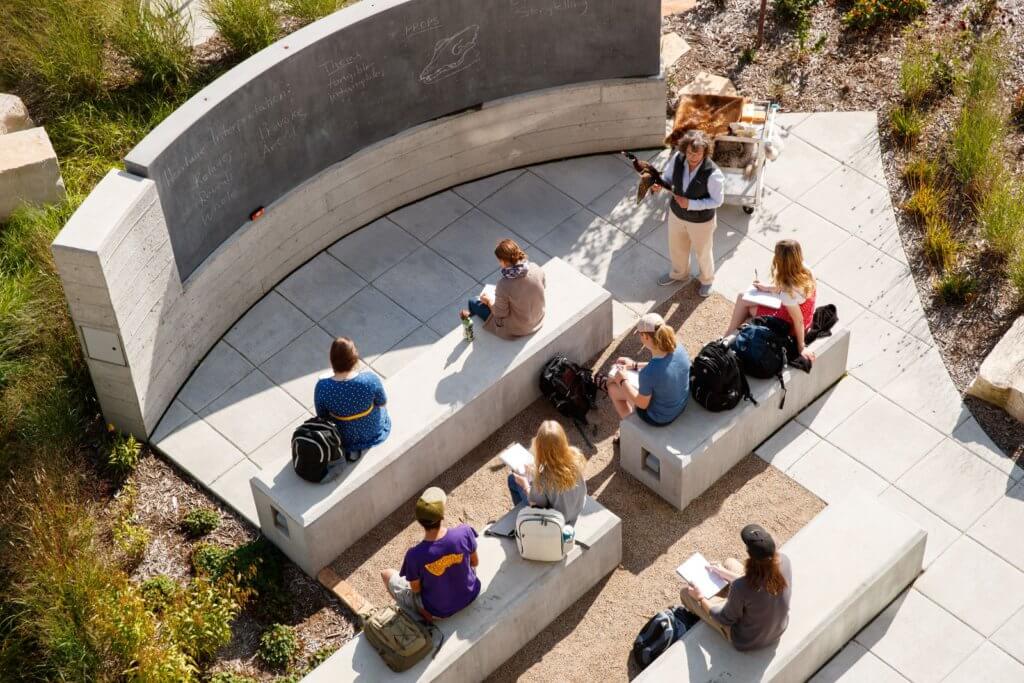William James Scheder didn’t have to think too hard about where he would pursue his undergraduate degree. The University of Wisconsin-Stevens Point’s College of Natural Resources — a leader in conservation and natural resources for over 50 years — was a frontrunner for him to pursue a major related to the environment and natural resources. UW-Stevens Point was also where his father, sister, and aunts are proud alums who credit their successes.
A nature-lover who hopes to one day work in the government, Scheder opted to pursue a double major in Environmental Science and Management and Political Science. What he finds invaluable about his first major is the experiential component of the programme. It was designed to offer a broad-based foundation, equipping students with the knowledge and skills needed to make an impact on the world.
Outside the classroom, learners forge lifelong connections in various student organisations, apply their skills at one of the College’s many centres, or work alongside world-class researchers in making world-changing discoveries.
UW-Stevens Point’s location at the crossroads of the Wisconsin River Valley and the Central Sands region of Wisconsin means there’s no living laboratory quite like this, making it an ideal place to study conservation and natural resources. The College of Natural Resources has three designated field stations, the Central Wisconsin Environmental Station, Schmeeckle Reserve, and Treehaven. These field stations serve the research, outreach, and educational needs of the College and the greater community at large.
Despite the impacts of COVID-19, Scheder has been able to experiment with soils and waters –– an experience he describes as “awesome.” The College’s strong emphasis on career readiness has been helpful as well.
“It’s one thing to talk about concepts, and entirely another to apply those,” he says. Scheder’s professor, Dr. Jason Riddle, encouraged him to further enrich his university life by joining the Student Government Association. Today, he is their Student Body President.
“It’s been a fantastic experience,” he enthuses. “I have met dozens of awesome people through this organisation. The association enables me to fight for students and have a say in the direction of this university, and I love it.”

At UW-Stevens Point students forge lifelong connections in various student organisations, apply their skills at one of the College’s many centres, or work alongside world-class researchers in world-changing discoveries. Source: University of Wisconsin-Stevens Point
At UW-Stevens Point students forge lifelong connections in various student organisations, apply their skills at one of the College’s many centres, or work alongside world-class researchers in world-changing discoveries. Source: University of Wisconsin-Stevens Point
The College of Natural Resources is home to six distinct academic disciplines and delivers a well-rounded fundamental education in Fisheries and Water Resources; Forestry; Human Dimensions of Natural Resource Management; Paper Science and Chemical Engineering; Soil and Waste Resources; and Wildlife Ecology. Experiential opportunities abound across each area’s lineup of courses. All students are required to take a core group of courses and specialise in their respective areas during their first two years.
Professor of Wildlife Shelli Dubay echoes the importance of hands-on experiences, stating: “Experiential learning takes students out of their comfort zone. It allows them to decide if their future career path is really for them. They can ask their peers and instructors questions while walking to a field site or studying after class is over. It is a more immersive experience that allows for greater personal connections.”
The excursions she guides often leave students beaming with a sense of accomplishment and make learning impactful. Once, on a field experience, Dr. Dubay and her team routinely have students locate wild animals affixed with telemetry transmitters. In the process, they learned to use the right kinds of on-the-job equipment.
“In wildlife diseases and wildlife techniques, we necropsy — or autopsy in human medicine — animals. This allows us to show what a normal heart looks like in a coyote or a normal breast muscle score of a red-tailed hawk. These animals are usually hit by cars and are otherwise normal,” she says.
In the Introduction to Fisheries, Forestry, and Wildlife class, students have the opportunity to visit Schmeeckle Reserve –– a 280-acre conservancy area on the campus of UW-Stevens Point –– to measure coarse woody debris and snags. The visit complements their in-class lessons on how these habitat elements are essential for small mammals and amphibians. Following this, they compare their findings from two different sites in the lab before quantifying and turning in a lab assignment.
“This exercise helps students understand how important accurate data collection in the field can be used to make management decisions to manage forests for wildlife species,” Dr. Dubay explains.
These experiences help produce successful outcomes for the College of Natural Resources graduates. Among Dr. Dubay’s success stories is Jake Shurba, who worked with Dr. Dubay and Dr. Riddle to identify parasites in greater prairie chickens.
“Jake learned how to identify these parasites in prairie chickens that died during the graduate study. He also wrote a manuscript on this endeavour, and it was published last month in the Journal of Parasitology, with Jake as the first author,” explains Dr. Dubay. Today, he is pursuing a graduate degree in South Carolina, studying waterfowl population dynamics and disease ecology.
The College of Natural resources recently celebrated 50 years of excellence in educating the next generation of conservation and natural resources professionals. It is little wonder their success and the strength of the other programs at UW-Stevens Point helped rank them 14th among regional public universities in the Midwest region; or why students from across the globe flock to its picturesque campus for an unrivalled education in conservation and natural resources.
Click here to start your journey at UW-Stevens Point.
Follow the University of Wisconsin-Stevens Point on Facebook, Instagram, Twitter and YouTube











